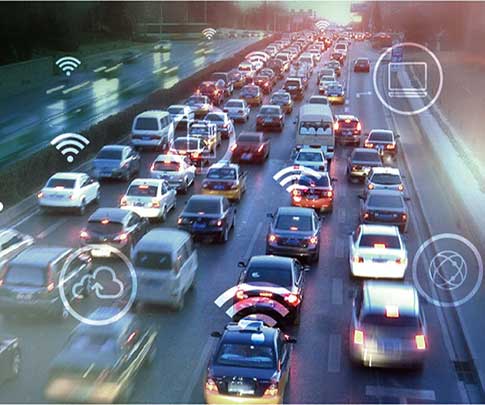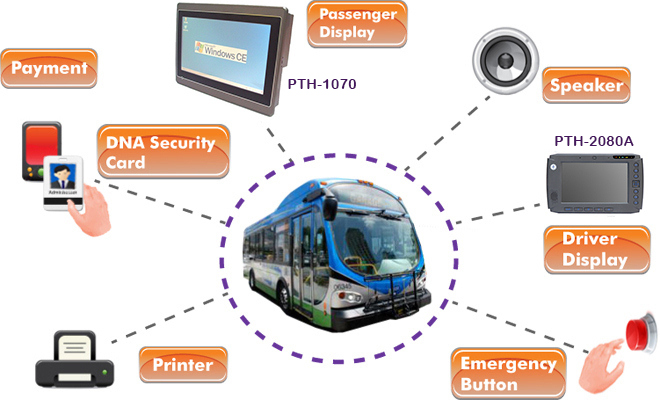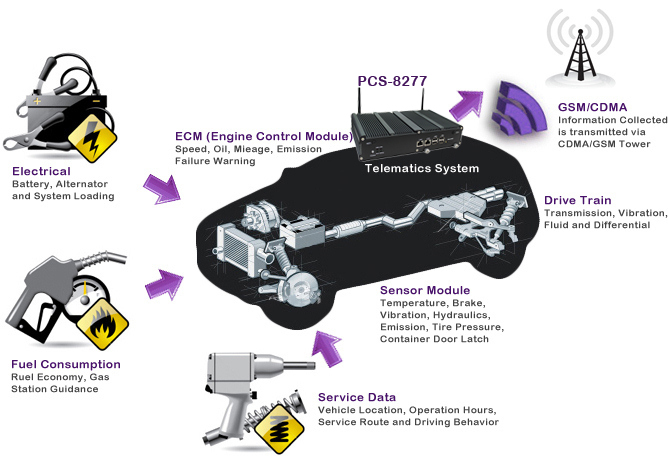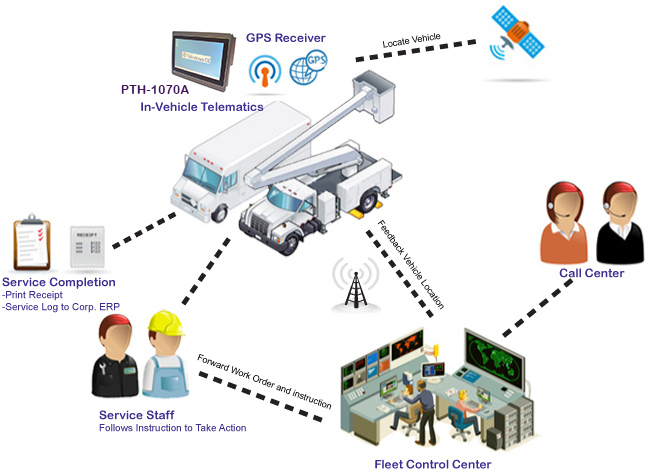What is Telematics?
Telematics refers to the incorporation of various computer and communication technologies into a vehicle format. The application environment can be Fleet Management for heavy trucks, vans, taxis, buses, police cars, ambulances, fire engines, or service vehicles, or even for Asset Tracking and Maintenance for trains, cargo ships, agriculture machinery and marine vessels. Telematics consists of the technology of sending, receiving and storing information via telecommunication devices in conjunction with secure remote control. Typically, data is transmitted over one or more wireless radio interfaces to an operations or dispatch center as the assets travel from one location to another.

Mobile PC technology advances Telematic
The rich PC platform offers a wealth of processing performance, networking options and high-speed peripheral interfaces. All that remains is how to adapt and ruggedize this platform to the flexible needs of these vehicles. In particular, mobility features such as Wi-Fi and other wireless connectivity solutions, low power processors and chipsets, easy-integration GPS receivers, and affordable high-reliability solid state disks (SSDs) combine to solve the challenges of managing automotive, service, construction, train, and marine fleets. More powerful yet low power consuming CPUs makes the Telematics able to handle multiple functions in a compact system. Now vehicles can be monitored and managed in real time due to these advances.
PC-based Telematics makes Fleet Management much more efficient than ever
Due to the rapid technological advancements and competitive forces occurring in the embedded / industrial PC market, ruggedized PC-based telematics solutions are becoming more affordable now. The PC platform offers a great deal of flexibility, including expansion options, which enable OEMs and installers to configure systems easily according to the requirements of various jobs. Leveraging the desktop world allows software developers to target Telematics applications to acquire and forward data and commands in a secure manner.
Fleet Preventive Maintenance
Asset management, driver safety and operating costs are among the top concerns of companies that have many vehicles in their fleets. Traditional methods involve manual measurements and scheduled service methods. Companies err on the side of safety, but inconsistent routes and driving conditions make it difficult to predict service needs, which often leads to wasteful expenses and down time when service is performed too soon. Attempts to save money by stretching out service intervals can lead to harmful or even catastrophic failures of engines, tires, transmissions, etc.
Computer technology can solve these problems and minimize expenses by bridging between operations/dispatch centers and Engine Control Modules (ECMs) or Engine Control Units (ECUs) in the vehicles. These ECMs / ECUs measure critical data and transmit over the industry-standard CAN bus interface. Rugged embedded PCs with CAN connectors collect and store the data, and then transmit over a variety of standard wireless technologies. Telematics computers not only transmit this data over wireless networks, but receive messages and alerts for drivers to take precautionary measures. Processors and chipsets from the desktop and mobile computer worlds are equipped with flexible connectivity options, industrial temperature ratings, and proven operating systems for reliable, embedded-class experiences. This allows remote service stations and dispatch centers to stay on top of conditions as they develop and assure greater levels of safety than ever before.
Vehicle fleets handle so many aspects of our daily lives, from delivery trucks and vans to municipal utility workers to police / fire / ambulance services, and yes, even the famous "cable guy." With so many vehicles on the roads, and customers expecting timely service appointments, informal and manual dispatch and tracking techniques such as spreadsheets, sticky notes, white boards and reams of paper are becoming inadequate and obsolete.
End-to-end computer networks can simplify and automate the tracking and route assignments in real time while improving service levels and customer satisfaction. Back office computers running advanced software connect to office enterprise Ethernet networks and servers in data centers. Firewalls and VPN support ensure security from hacking and protect sensitive data. Externally, the public internet and commercial wireless networks allow easy transferring of encrypted data to and from in-vehicle telematics systems. From planning and scheduling to invoicing, computers automate the entire process and reduce errors.
Information Systems aboard public transportation "metro" buses, long-range buses and school buses serve multiple functions, including: bus location reporting, audible bus stops readings, vehicle condition/status reporting, in-bus digital signage, entertainment, Wi-Fi access, in-bus surveillance, external road surveillance and recording in case of legal action, and real-time driving reports.





